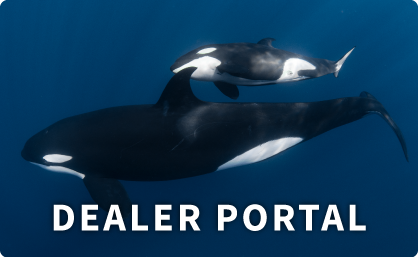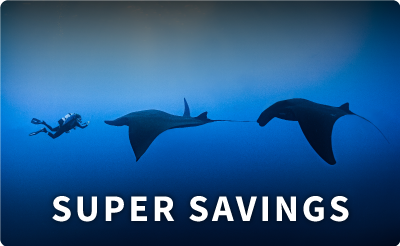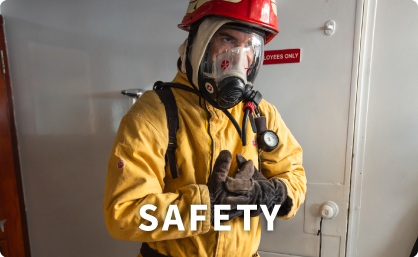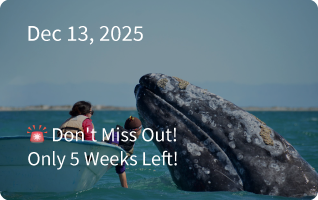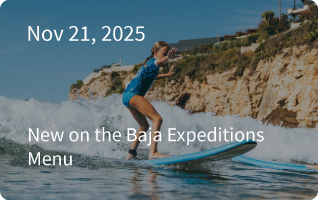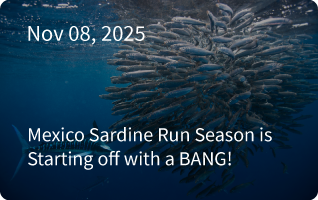Location: Lighthouse Bay, Guadalupe Island, Baja California, Mexico.
Comments: Dive Day 1 of this trip started out with an overcast sky, 15-20 knots of wind and a lumpy sea of 2-3 feet which is very uncharacteristic of cage diving with great white sharks at Guadalupe Island. I have developed a theory that white sharks “back off” from the surface and stay much deeper on the odd day that it is windy out here and today was no exception.
Most of the sharks stayed pretty deep and we could see them circling 40 to 50ft below the Nautilus Explorer. My guess is that visual acuity is very important to white sharks and they become uncomfortable on windy days because the chop and whitecaps make it difficult to see what’s going on at the surface. It’s a risk benefit analysis.
While only the odd white shark came shallow to pay a visit with the divers in our cages, the ones that did come up showed very interesting behaviour. They came in really close to the cages and certainly gave our guests some good thrills and great photo op’s. One of the many excellent features of diving Guadalupe Island is that it is not very windy or rough onsite very often and when conditions do deteriorate, it has never lasted more than 2 days.
Interesting note from Mauricio Hoyos, our very, very excited Mexican shark scientist friend on station on Guadalupe: for only the second time in four years, a predatory white shark event was witnessed. It happened just before we arrived. Chicka, a huge and beautiful female great white shark, captured an elephant seal and literally bit it’s head off. This apparently started quite a sequence of events including some very aggressive fighting over the carcass between the sharks (maybe that’s why we are not seeing many sharks today?).
Mauricio was quite close to the event in his panga (skiff) and was able to capture everything on video. In fact on two different occasions during the feeding, sharks literally attacked Mauricio’s panga. He later commented that never before has a 22ft fiberglass panga felt so flimsy!! This is indeed a very interesting development.
We have spotted decapitated sea lions on the beach before and have always had trouble rationalizing why the carcass wasn’t devoured by the sharks. Our guess is that the sea lions were taken by white sharks as it’s hard to imagine any other predator decapitating them. Sharks usually attack the hind quarters of seals which effectively immobilizes them. But that won’t work with sea lions as they use their pectoral fins for locomotion and hence, presumably the reason for decapitation by the white sharks – biting the hind quarters of a sea lion won’t immobilize it.
We can only guess that there is not enough fat on a sea lion to make them attractive to a white shark and thus the carcasses were abandoned and washed up on the beach. Can’t think of any other reason. From what we heard of yesterday’s events, the elephant seal carcass was definitely not abandoned!
–Captain Mike
Weather: Overcast with the first day of “flat light” this season making it hard to spot white sharks. 15 – 20 knot winds. Air temperatures in the low 70’s.
Water: Water temperature 69°F, visibility 60 – 100 feet.

